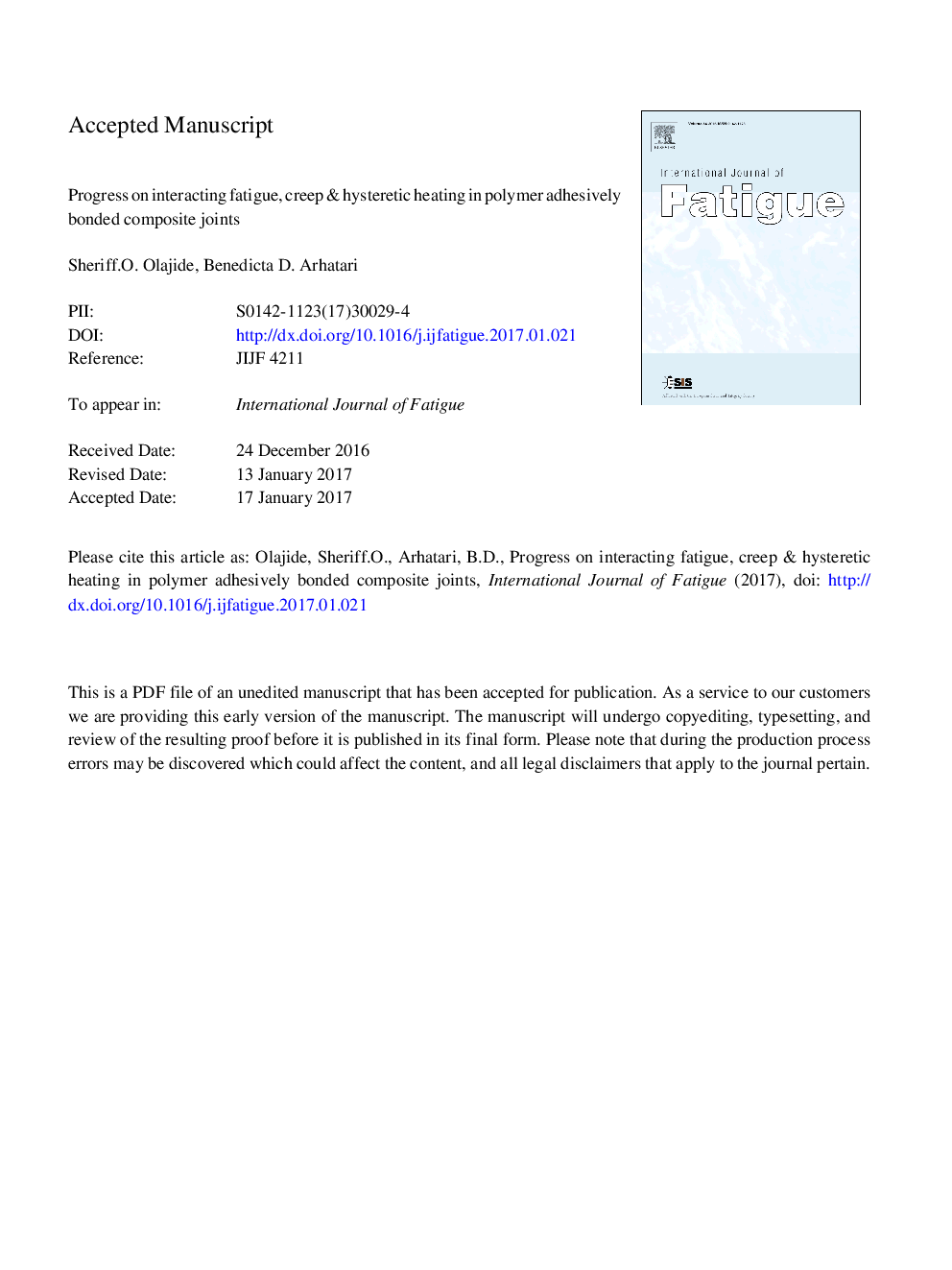| Article ID | Journal | Published Year | Pages | File Type |
|---|---|---|---|---|
| 5015220 | International Journal of Fatigue | 2017 | 31 Pages |
Abstract
Fatigue loading frequency effect and interactions of damage mechanisms, creep & hysteretic heating in bonded polymer composite joint were studied due to the fact that many researchers came to contradictory conclusions and reasoning on this issue. Temperature changes in polymer joints at fatigue loading frequencies of 15-2 Hz were insignificant relative to ambient temperature changes, but there was a general reduction in temperature rise with decreased loading frequency. Hysteretic heating in polymer joint was not influential or had no significant effect on the damage development in the joint under fatigue. A pattern of increased fatigue life with a reduction in loading frequency under variable fatigue was observed. Stiffness degradation under fatigue cycle leading to strain hardening of the glassy polymer adhesive was found to be the main damage development mechanism. At 2 Hz loading frequency, the reduction in frequency from 15 to 2 Hz was sufficient enough, to cause a reduction in the rate of strain hardening of the polymer joint leading to 50% increase in the average fatigue life relative to the other three frequencies 5-Hz and 15 Hz. There exist three characteristic regions in the fatigue stiffness degradation of polymer joints, Region I, region II and region III and were similar to that exhibited in creep behaviour to failure in polymer materials under constant sustained load with heat and time. The end of the region II was unique with all fatigue frequency and had a value of 66 ± 6% of the fatigue life. This may be useful in identifying damage initiation and propagation in adhesively bonded joint. It has been proven in this research work that creep and hysteretic heating effect in adhesively bonded joints are not effective on fatigue damage rather strain hardening and rate of strain hardening of the glassy polymer adhesive under fatigue cycle. The paper addresses one of the most critical steps towards enhancing the design for fatigue in polymer bonded joints.
Related Topics
Physical Sciences and Engineering
Engineering
Mechanical Engineering
Authors
Sheriff O. Olajide, Benedicta D. Arhatari,
